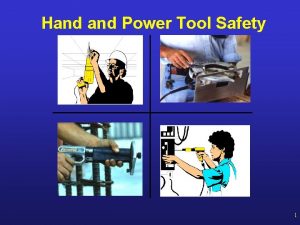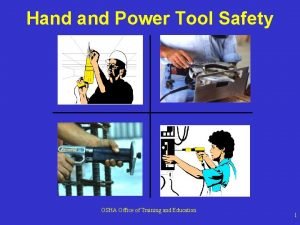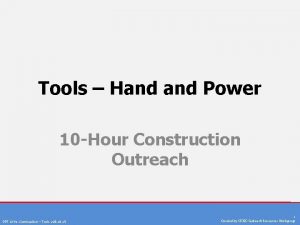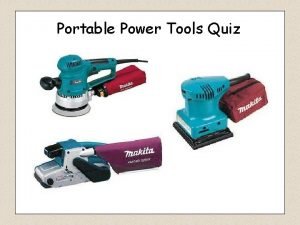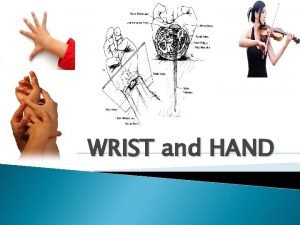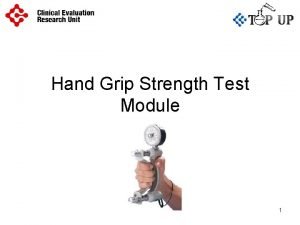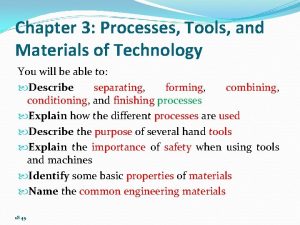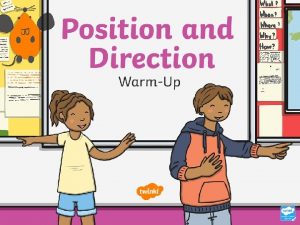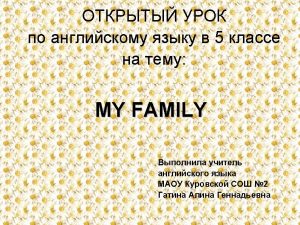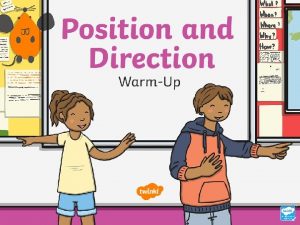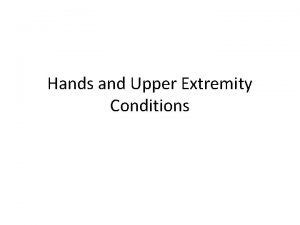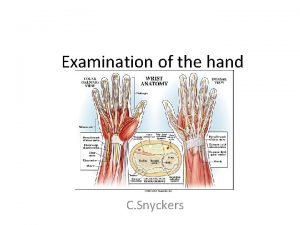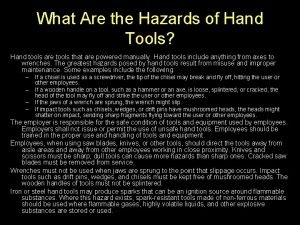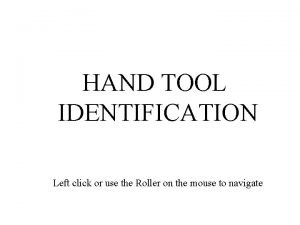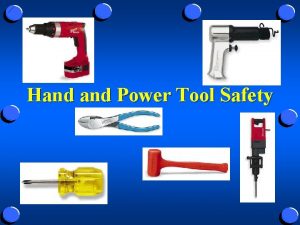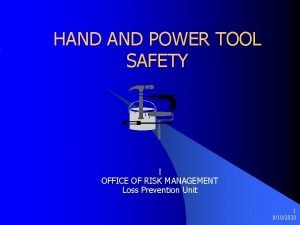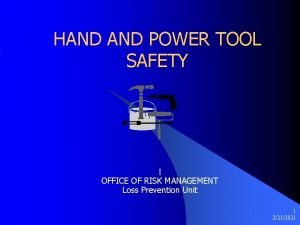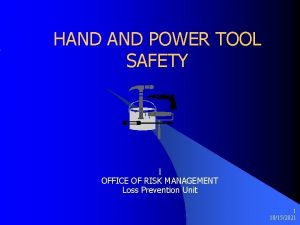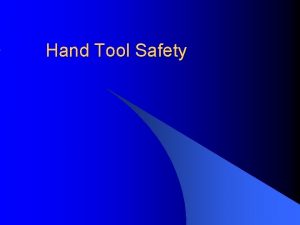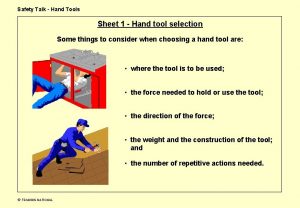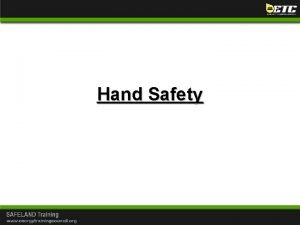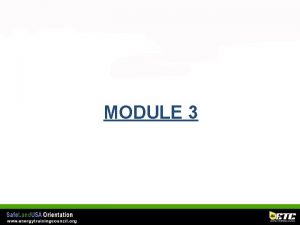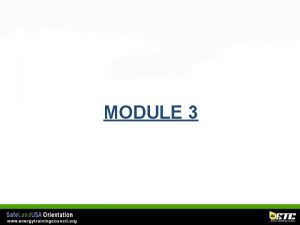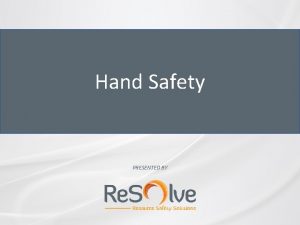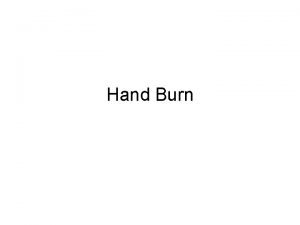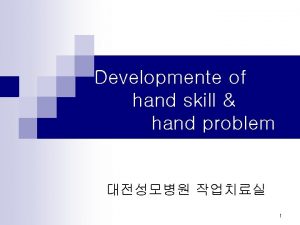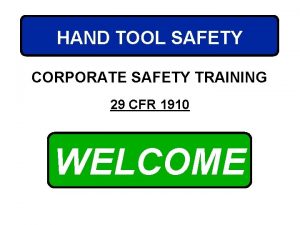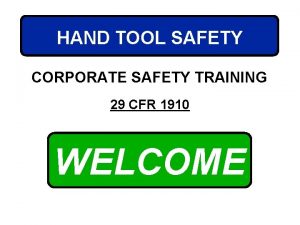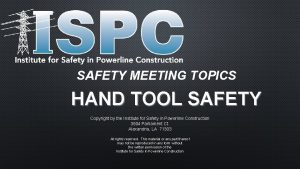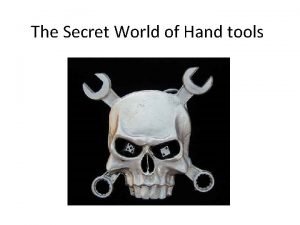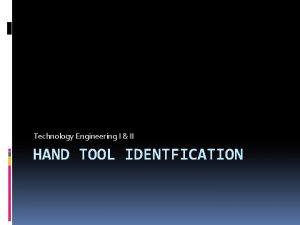HAND POWER TOOL SAFETY l OFFICE OF RISK

























- Slides: 25

HAND POWER TOOL SAFETY l OFFICE OF RISK MANAGEMENT Loss Prevention Unit 1 11/21/2020

DIFFERENCE BETWEEN Hand Tools AND Power Tools v Hand tools Have no power source, other than the physical force applied by the user. Handtools include anything from axes to hammers, and screwdrivers to wrenches. v Power Tools Require a non-human power source to function properly--e. g. External (electricity, compressed air, etc. ) or Internal (battery pack, internal combustion engine, etc. ). 2 11/21/2020

Both kinds of tools require specific safety precautions or rules to be followed; yet some rules will apply to both. There are five basic rules that apply to all tools used either hand or power. 3 11/21/2020

5 Basic Rules v Keep all tools in good working order v Use the tool only for what it is designed to do v Examine the tool for damage before each use v Always follow the manufacturer’s instructions when operating any tool v Always wear the appropriate PPE when operating any tool 4 11/21/2020

GENERAL “Hand Tool” SAFETY RULES v Carry all sharp tools in a holster or sheath v Tag worn, damaged or defective tools and do not use them v Do not perform “makeshift” repairs to tools v Do not use cheater bars 5 11/21/2020

GENERAL Hand Tool RULES cont’d v Do not throw tools from one location to another or from one employee to another v When working on a ladder or scaffolding be sure you and your tools are secure v Do not carry tools in your hand while climbing, use a tool belt or host the tools by using a hand line 6 11/21/2020

The Greatest Hazards Of Hand Tools: Misuse/Improper Maintenance v Using a screwdriver as a chisel • Could cause the tip to break and fly, hitting either the operator or bystanders v A wooden handle on tool such as a hammer or an axe is loose, splintered or cracked • The tool head could fly off and strike the operator or bystanders 7 11/21/2020

Hand Tool Misuse/Improper Maintenance cont’d v Impact tools, e. g. chisels and wedges, are unsafe if their heads are “mushroomed” • The heads might shatter on impact sending sharp fragments flying v Wrenches must not be used if the jaws are sprung, cracked or twisted • The wrench could slip off 8 11/21/2020

SAFETY RULES For SPECIFIC Hand Tools HAMMERS v Use a claw hammer for pulling nails v Do not strike a hardened steel surface with a claw hammer v Do not strike one hammer against another hammer v Do not use a hammer as a wedge or pry-bar 9 11/21/2020

SAFETY RULES For Hand Tools cont’d CHISELS v Use only chisels that are sharp v Do not use chisels with a mushroom head v Use only hammers that are designed for use with chisels 10 11/21/2020

SAFETY RULES For Hand Tools cont’d SAWS v Do not carry the saw by the blade v Do not use any saw that has a dull saw blade v Keep control of the saw by releasing downward pressure at the end of each stroke 11 11/21/2020

SAFETY RULES For Hand Tools cont’d SCREWDRIVERS v Always ensure the screwdriver fits the head of the screw v Do not hold the work piece against your body while using the screwdriver v Do not use a screwdriver as a punch, chisel, pry bar or nail puller 12 11/21/2020

SAFETY RULES For Hand Tools cont’d SCREWDRIVERS CONTINUED v Do not use a screwdriver to test the charge of a battery v Use blue handled screwdrivers when working on electrical v Do not use a screwdriver to make a starting hole for screws 13 11/21/2020

SAFETY RULES For Hand Tools cont’d WRENCHS v Do not use wrenches that are bent, cracked, or that have loose handles v A hammer may be used for striking “face wrenches” wrenches ONLY v If at all possible use socket or box wrenches v Do not use a cheater bar 14 11/21/2020

SAFETY RULES For Hand Tools cont’d SNIPS v Wear safety glasses or goggles when using snips v Wear work gloves when cutting material with snips v Do not use snips as a hammer, screwdriver, wrench or pry bar v Use the correct type of snips for the job 15 11/21/2020

GENERAL “Power Tool” SAFETY RULES v Do not use power tools you are not trained on v Do not lift or carry power tools by their power cord v Keep power cords out of the paths of the power tool v Do not leave tools unattended 16 11/21/2020

GENERAL Power Tool RULES cont’d v Do not stand in water or wet surfaces when running a power tool v Hold all power tools by the plastic hand grips or other nonconductive areas. v Do not plug multiple electrical cords into a single outlet v Do not use power tools or extension cords with a missing prong v Ground all tools unless double insulated 17 11/21/2020

GENERAL Power Tool RULES cont’d v Be aware of all power lines, electrical circuits and water pipes that are not visible v Do not wear loose clothing, dangling objects or jewelry. Long hair must be restrained v All observers should be kept a safe distance from the work area 18 11/21/2020

Abrasive-Wheel Tools Powered abrasive grinding, cutting, polishing and wire buffing wheels create special safety problems because they can throw off flying fragments. v Before an abrasive wheel is mounted, it should be inspected closely and sound or ring tested to ensure it is free of cracks or defects v To test wheels, tap them with a light nonmetallic instrument. If they sound “cracked or dead” do not use them; they could fly apart 19 11/21/2020

Abrasive-Wheel Tools cont’d v Always use the right wheel or cup for the job you are performing. Be sure to match the “RPM Rating” with the tool. Finally, pay close attention any “special warnings, ” that the manufacturer may offer, such as “do not use in wet or highmoisture conditions. ” 20 11/21/2020

Circular Saws v Always wear safety goggles or safety glasses with side shields v Use a dust mask, especially when cutting treated woods v Wear hearing protection, especially during extended periods of operation 21 11/21/2020

Circular Saws cont’d v Use sharp blades, dull blades cause binding, stalling and possible kickbacks v Use the correct blade for the job v Ensure the blade guard is in working order, never remove it or tie it back v Avoid cutting small pieces that can’t be properly secured or the saw shoe can’t properly rest 22 11/21/2020

Drills v Be sure the chuck is securely tightened to the spindle v Tighten the bit securely and remove the chuck key v Always hold or brace the tool securely and use any auxiliary handles if provided v Don’t force a drill. Apply only enough pressure for the bit to do the cutting 23 11/21/2020

Miter/Chop Saws v Because of the saw’s downward cutting motion, be sure to keep hands and fingers out of the blades path v Be sure all guards are in place and working v Ensure that the recommended size and RPM blades are being used 24 11/21/2020

25 11/21/2020
 Power tools must be fitted with guards and
Power tools must be fitted with guards and Power tool safety education
Power tool safety education Identify hazards
Identify hazards Tool safety quiz
Tool safety quiz Hand tool safety toolbox talk
Hand tool safety toolbox talk Market risk credit risk operational risk
Market risk credit risk operational risk Real power and reactive power
Real power and reactive power Wrist flexion and extension muscles
Wrist flexion and extension muscles Clock showing 4:55
Clock showing 4:55 Mother father sister brother
Mother father sister brother Worker and machine process chart
Worker and machine process chart Im abendrot analyse
Im abendrot analyse Hand in hand module 1
Hand in hand module 1 It is used to process materials by hand.
It is used to process materials by hand. Put your left hand in
Put your left hand in Father mother sister brother hand in hand with one another
Father mother sister brother hand in hand with one another Hours hand
Hours hand Right hand in the air left hand in the air
Right hand in the air left hand in the air Ape hand vs hand of benediction
Ape hand vs hand of benediction Alabama driving manual
Alabama driving manual Ulnar claw
Ulnar claw Hand by hand
Hand by hand Handsoft pro
Handsoft pro Hand tool hazards
Hand tool hazards Hand tool identification
Hand tool identification Hand tool dexterity test
Hand tool dexterity test
